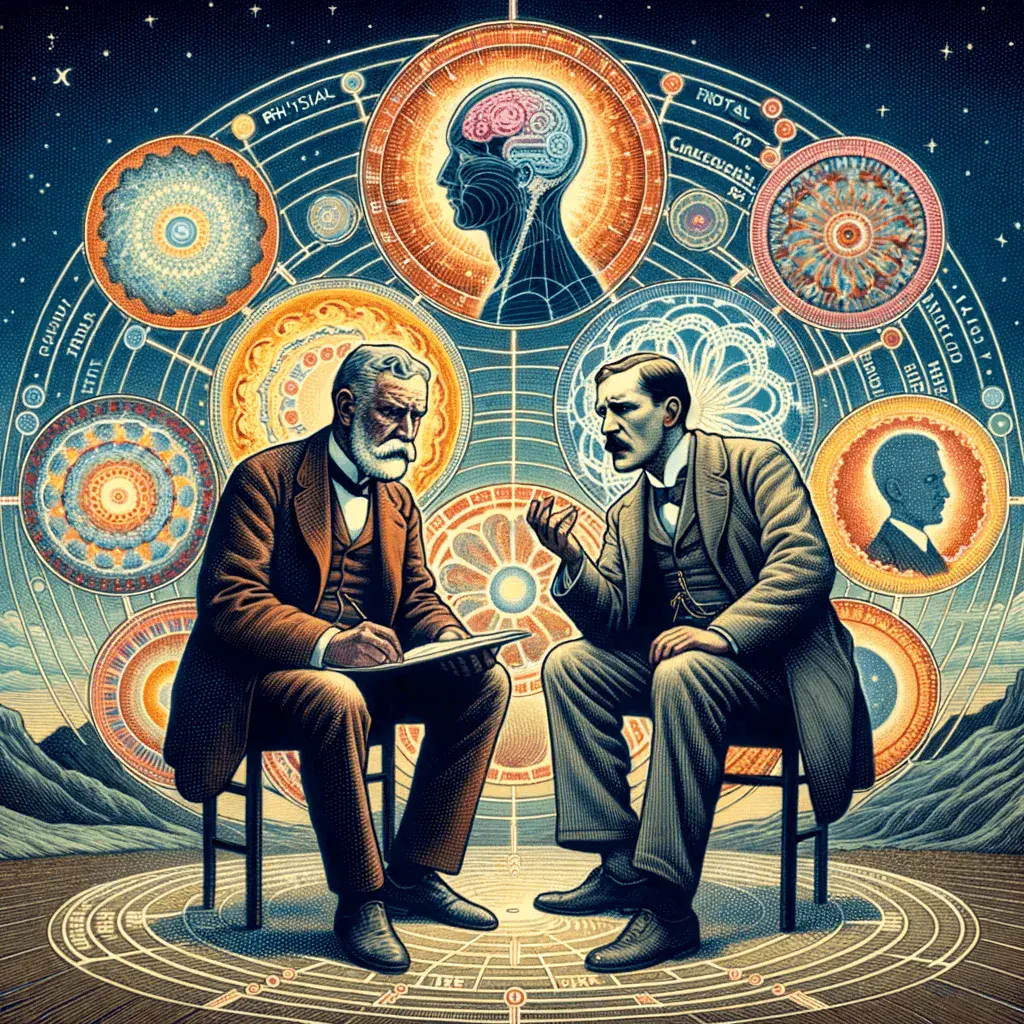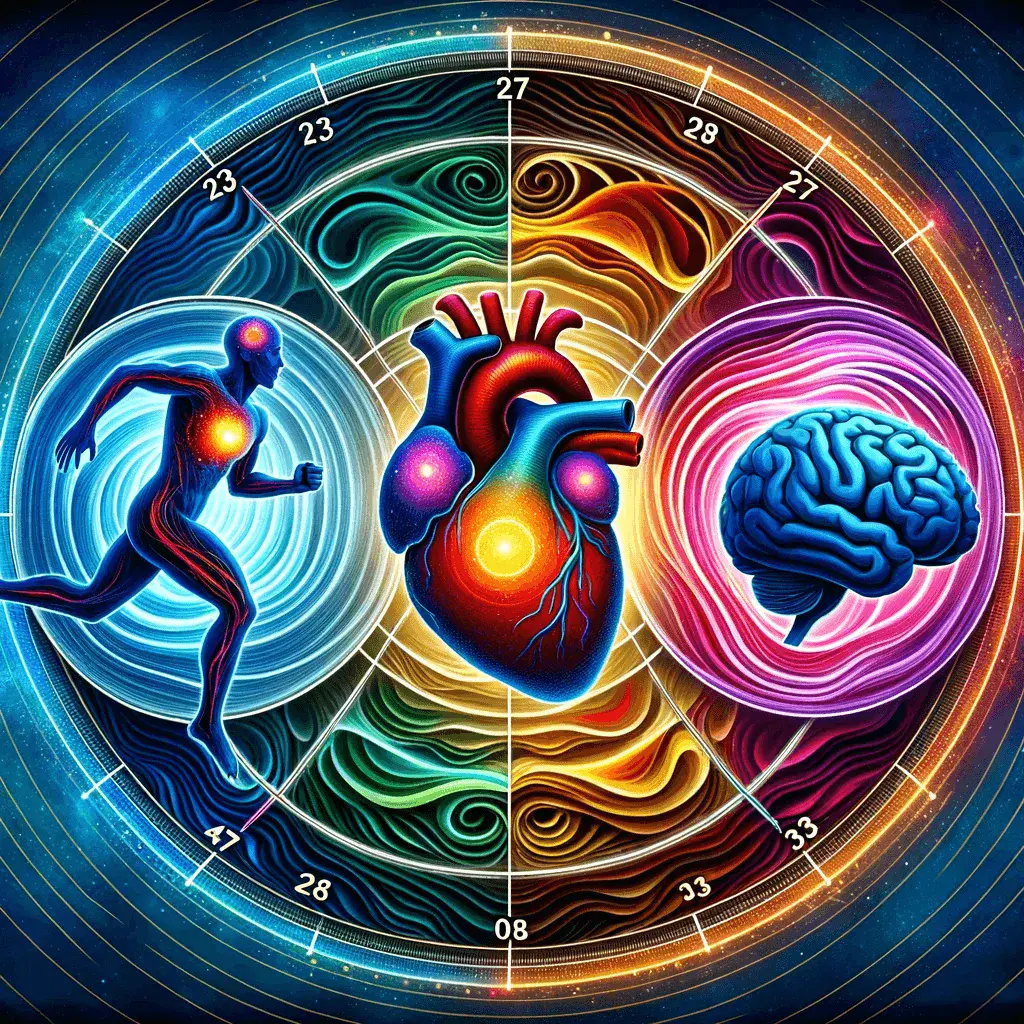
Decoding The Magic Of Biorhythms
Biorhythms, a captivating concept, emerged from the belief that our lives are deeply intertwined with rhythmic cycles.
article by Adrian Wallace
Born in the early 20th century, it was the brainchild of Dr. Wilhelm Fliess, a close associate of Sigmund Freud. Fliess postulated that our lives oscillate between peaks and troughs in physical, emotional, and intellectual realms. This theory, while enveloped in mystery and skepticism, has intrigued many for over a century.
Three's A Charm
Central to the biorhythm theory are three primary cycles: the 23-day physical, the 28-day emotional, and the 33-day intellectual cycle. An interesting fact is that these numbers were not arbitrarily chosen. The 28-day cycle, for instance, parallels the average menstrual cycle in women. Each cycle is believed to ebb and flow, with days of heightened activity, neutrality, and potential challenges.

The Pulse Of The Physical
The physical cycle, with its 23-day span, governs our vitality, endurance, and overall physical energy. On days when this cycle peaks, you might find yourself effortlessly conquering that challenging hike or acing a workout. Conversely, when it dips, the couch's allure might seem irresistible. This rhythm plays a pivotal role in athletes' lives, with some even aligning their training schedules to it.
The Ebb & Flow Of Emotions
The emotional cycle, lasting 28 days, paints the canvas of our feelings, moods, and sensitivities. When riding the emotional crest, feelings of joy, optimism, and emotional resilience might dominate. However, the troughs can be periods of introspection, vulnerability, or even melancholy. Historically, artists and creatives have often tapped into these emotional waves, channeling them into their works.

The Intellectual Odyssey
Spanning 33 days, the intellectual cycle steers our analytical abilities, memory, and cognitive prowess. Peak days might translate to successfully solving complex problems, innovative thinking, or absorbing new information like a sponge. However, troughs might be times of mental fog or reduced clarity. It's fascinating to note that some scholars and inventors have, knowingly or unknowingly, aligned their breakthroughs with this cycle.
Biorhythms Today: Beyond The Theory
In today's digital age, biorhythms have found a renaissance. Numerous apps and online platforms offer personalized biorhythmic charts. An interesting fact is that in the 1970s, some Japanese companies even incorporated biorhythmic calculations to assign work schedules, believing it could reduce workplace accidents.
, the 28-day.webp)
While the empirical validity of biorhythms continues to be a topic of debate, its allure is undeniable. For many, these rhythms offer a lens to view the symphony of life, with its crescendos, pauses, and diminuendos. Whether scientifically proven or not, the dance of biorhythms remains a captivating aspect of human existence.
Published: 10/30/2023
Modified: 10/30/2023
More predictions
Come back here soon to learn more about yourself and your future


Biorhythms In Modern Culture
In today's fast-paced digital landscape, the age-old concept of biorhythms has found new resonance. This article delves into the influence and integration of biorhythms in contemporary culture, showcasing its relevance, applications, and the fascinating interplay between ancient wisdom and modern technology.


Biorhythms: Shaping The Tapestry Of Our Lives
Biorhythms, rooted in ancient beliefs and modern theories, propose that our lives are governed by innate cycles. These rhythmic patterns, like invisible threads, are believed to weave through our physical, emotional, and intellectual domains, influencing our day-to-day experiences and overall well-being.


Deciphering The Biorhythmic Code: Interpreting Results
Biorhythms, with their intricate cycles, offer a fascinating window into potential peaks and troughs in our physical, emotional, and intellectual states. But once we've crunched the numbers and have a biorhythmic value in hand, how do we interpret it?